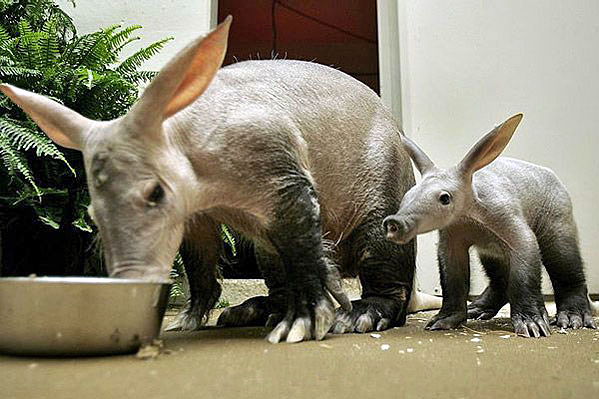Biology: Aardvark
Mother and cub. The word aardvark comes from the Afrikaans/Dutch "aarde<-varken" "ground pig".
The Aardvark is a burrowing mammal. It grows between 1 meter (3.2 ft) and 1.3 (4.2 ft) meters, and can reach lengths of 2.2 m (7.2 ft). The live in Africa and feed mainly on termites and ants.
It is a fast digger but moves slowly in other ways. First it digs in the nest of the ants or the termites until it finds the insects. Then using is long 30 cm tongue it picks them up and eats them. It closes its nostrils to prevent the bugs from crawling up its nose and its thick skin stops their bites from harming the aardvark.
A single cub weighing around 2 kg after its born is able to leave the burrow to accompany its mother after only two weeks, and is eating termites at 14 weeks and is weaned by 16 weeks. At six months of age it is able to dig its own burrows, but it will often remain with the mother until the next mating season.
The aardvark's main predators are lions, leopards, hunting dogs and pythons. Aardvarks can dig fast or run in zigzag fashion to elude enemies, but if all else fails, they will strike with their claws, tail and shoulders, sometimes flipping onto their backs to lash with all fours. Their thick skin also protects them to some extent.
Source:
National Geographic
Wikipedia




0 comments:
Post a Comment